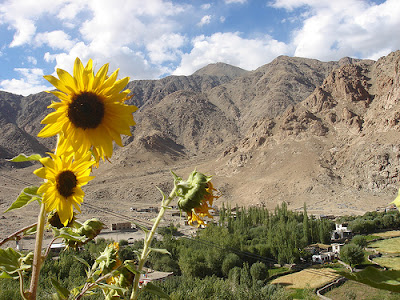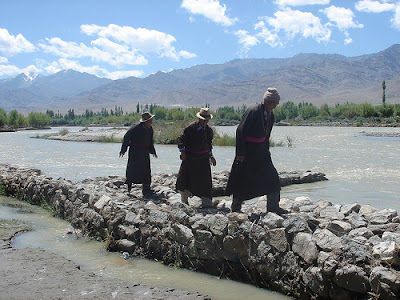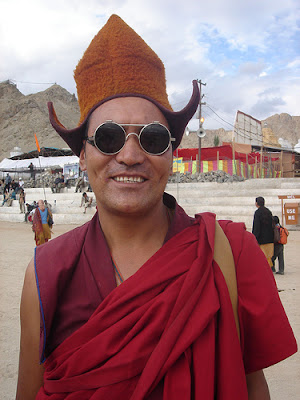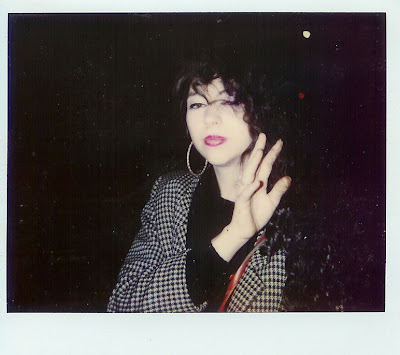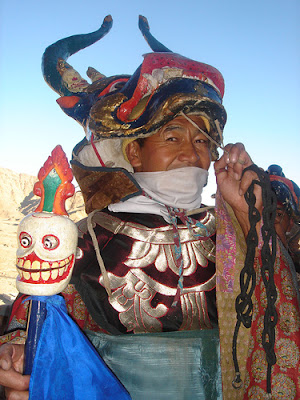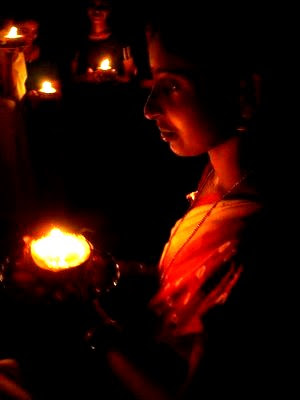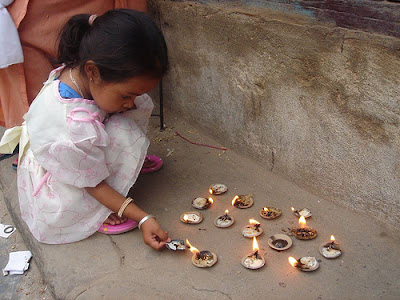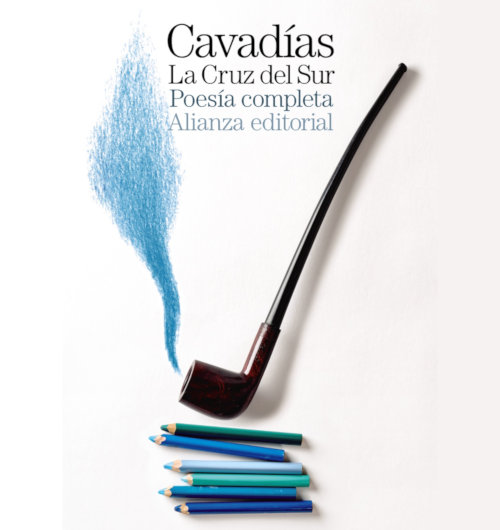Lama Watch: Amritsar, Punjab
Today HH the Dalai Lama opened a 4-day inter-faith conference at Amritsar.
This wasn't announced publicly (at least not up here) till a couple days ago - otherwise I would have made tracks to Punjab. Flights out of Leh were full!
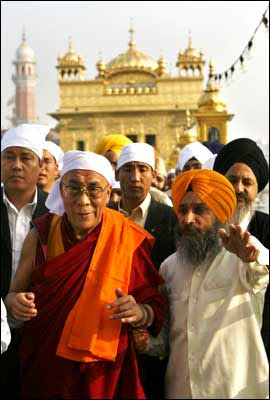
Here is the adorable photo from Rediff.com news. Note the big, burly Khampa Tibetan security guards on either side of him, wearing the mandatory white kerchiefs required by the Golden Temple.
I especially enjoyed the comments the (presumably Indian) readers made, below the story.
Things like:
This man is truly a saint...
i think he is beyond religion..i am proud that India had the honour to Shelter...nay be blessed by his presence...
and
i always get smile to see him. he is wonderful human .
and, more politically, in response to a critical Chinese reader:
As far as I know, India as well as all Indians respect One China Policy. We can not understand why China or Chinese doubt this fact!! Only thing we request Chinese people is to respect and accept the social, religious and cultural freedom of different chinese communities such as Tibetans. Even his holyness Dalai Lama has accepted Chinese political authority over tibet. But he asks for cultural, social and religious freedom for his people. When will China understand this?
Back in the heady post-independence days of the 1950s, India was very pro-Communist. Many people seem to have imbibed a lot of pro-Communist and therefore pro-Chinese ideas at that time. A well-known example is N. Ram, editor of the major newspaper The Hindu, who is always printing pro-China and anti-DL stuff. It is heartening to me to see Indians articulate views like those of the readers above.
I just hope they extend the same respect to the Tibetan people at large, once the inevitable, unthinkable happens and this particular iconic DL incarnation is no more.
(Although I have been lucky enough to photograph HH a number of times, this wonderful photo above is not mine. It is by Manpreet Romana of GettyImages/Agence France Presse. I hope he/they don't mind my sharing it here. )
Successful succession?
People always ask me (once they find out I am, in fact, some kind of weird Dalai-Head whose life is mostly devoted to following the Dalai Lama around) ---they always ask me, "Has the Dalai Lama picked his successor yet?"
Some say, "I heard he may refuse to pick his successor." or, "Isn't there a prophecy that he will be the last Dalai Lama?"
Other people are a bit confused by the figure of 22-year-old HH the Gyalwa Karmapa, who is so often photographed holding hands with the Big DL.
"Is that monk going to be the new Dalai Lama someday?" several people have asked me. Which is sort of like saying, "When I die, will you take over being me?" The Karmapa has already been incarnated as The Karmapa. He can't change identities in mid-life. (He very well may, however, assume the de facto role of leadership of the Tibetan community.)
In fact, the Dalai Lamas have never named or hand-picked their successors, in the 600- or-so-years of the office. The tradition has always been that after the DL's passing ("leaving his body,") the inner circle of senior rinpoches and lamas (after a suitable period of a year or so) look for signs and omens, indicating where the newborn Lama will be found.
The high lamas examine their dreams, and they all have training in how to "read" the symbols in the universe. Things like "I saw a crane flying east" or "I had a dream about a lake near Taktser" all have an agreed-upon, shared meaning - or at least they did 60 years ago, in Tibetan monastic life.
Obviously, things are more complicated now, to say the least. (For more background, the best books to read are In Exile from the Land of Snows by John Avedon and Freedom In Exile by HH Dalai Lama).
This has led HHDL to announce that, following the tradition of conscious reincarnation, he will definitely choose NOT to be reborn in Chinese-occupied Tibet. "If my death comes when we are still in a refugee status, then logically my reincarnation will come outside Tibet," he said on the sidelines of an inter-faith meeting in the Sikh holy city.
That way, the Chinese government cannot hand-pick their own "Dalai Lama" and claim authenticity - they way they have with the 11th Panchen Lama.
The latest has HH saying that not only will he not be reincarnated in Chinese-occupied Tibet, he will perhaps "skip reincarnation" altogether, and choose for the first time to hand-pick a successor. The really hilarious bit is that the Chinese government condemned this statement as a "breach of religious protocol."
Like they would know. But the Dalai Lama has always maintained that it should be "up to the Tibetan people" whether the tradition of Dalai Lama should even be maintained.
Now he says it may be time for a radical break with tradition - In the most recent statements, HH announced there may be a public referendum on the issue when the time comes.
While the sun shines
In the meantime, HH is racking up the international frequent flyer points, meaning he is in India these days only about 50% of the time. I see him as a figure like Gandhi - a once in a generation icon of peace. So, I'll soon be on my way to see him in Karnataka, south India. There are lots of other places in India I'd like to go, but things like Khajuraho and the Taj Mahal will be there in 10 years, for sure. Unfortunately we can't say the same for HH.
